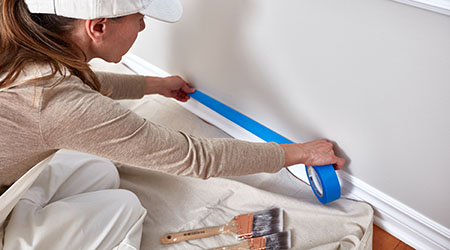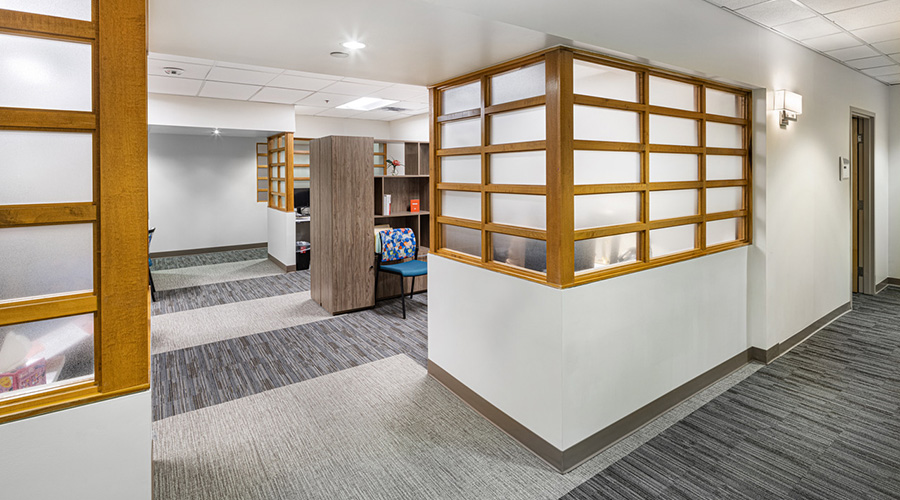Making sure patients and residents are well taken care of is the top priority for hospitals and other healthcare facilities. Whether it with the proper bedding, food or room décor, facility managers are in charge of choosing products that help patients, residents and their family feel comfortable while also improving their well-being. Paint choices can play a major role in the comfort care that patients receive. Healthcare Facilities Today talked with paint manufacturers on what colors should be avoided in order for patients to receive the best care.
How can paint color choices impact patient care? Are there any colors that should be avoided?
Healthcare facilities are one of the most rapidly evolving settings, and designing for flexibility is key for healthcare spaces. In order for professionals to create a sanctuary for patients, they can incorporate tones that draw on nature and organic materials, inspired by the desire to help bring the outdoors in.Professionals can also infuse comfort and peace into any room with the use of warm neutrals, watery blues and soft greens. In addition, they can add a spark of joy with bright and cheerful pops of color applied to an accent wall or mural to break up an otherwise sterile environment and create a positive focal point for patients.
— Emily Kantz, interior designer at Sherwin-Williams
Biophilic design, an approach centered on building connection between a building and its occupants, remains one of the largest influences in the healthcare industry. We see biophilic design remaining a top trend in the coming year, along with connections to the community, accessibility and a focus on wellness and healing. With this in mind, healthcare facilities should consider colors that promote a sense of serenity and peace. Additionally, there should be an emphasis on natural materials in designing a patient room as comfort is important to patients during their stay. Authentic materials, along with organic colors can evoke feelings of comfort and can help hospitals convey a sense of transparency to the physical space.
— Brian Osterried, senior product manager and technical lead, PPG Copper Armor
Color can enhance a sense of well-being on both a physical and mental level. Certain hues promote healing while also fostering feelings of comfort and care. Soft greens and blues can usher in a sense of peace to patients and their family members who need respite and calm during recovery.The restorative power of color in design is often thought of for patients, but it can equally impact those working in hospitals and rehabilitation facilities. Essential healthcare workers benefit from the stress-relieving qualities of those soft greens and blues. Those hues can provide relief during a long shift or calm during high-stress situations.Warm neutrals are another great way to create a restorative, timeless environment with paint color. Those colors feel like a comforting hug.
— Erika Woelfel, vice president of color and creative services, Behr Paint Co.
Cooler colors like greens, blues and purples are often seen as more calming hues and work great in settings that are looking to create a more relaxing and serene environment. They have an airy and tranquil quality to them. More organic shades that have a tie to nature can bring a sense of ease and comfort to the space. Bolder, brighter colors and complementary color combinations – think red and green, blue and orange, yellow and purple – can create more excitement and energy in a space. They tend to be more stimulating and vibrant. So once again, it comes down to the look and feeling you are trying to achieve which is why it is so important to take the time to understand the purpose of the space when picking paint colors.
— Arianna Cesa, associate manager, color marketing and development, Benjamin Moore Co.
Mackenna Moralez is assistant editor with Healthcare Facilities Today.

 Joint Commission Standards: What Updates Matter Most?
Joint Commission Standards: What Updates Matter Most? Swinerton Completes Construction at Atlanta's Grady Hospital
Swinerton Completes Construction at Atlanta's Grady Hospital NY Governor Hochul Announces $300M in Funds for IT and Cybersecurity
NY Governor Hochul Announces $300M in Funds for IT and Cybersecurity Healthcare Is the New Retail
Healthcare Is the New Retail Bridgeway Behavioral Health Services Launches Campaign to Renovate Health Center
Bridgeway Behavioral Health Services Launches Campaign to Renovate Health Center